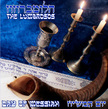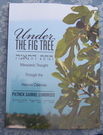Although he was a son, he learned obedience through what he suffered.
There is an American expression: “The devil is into details”. It is funny that the enemy is given this attribute. The enemy doesn’t know anything. All does is copy God. He merely tries to be a counterfeit in order to deceive us. God is the One really into details; nothing is more evident in this week’s reading sections, one on Aaron’s sons Nadab and Abihu who perished for offering ‘unauthorized incense’, and the other on Uzzah who perished because of touching the Ark of God not being authorized to do so (Leviticus 10:1-2; 2 Samuel 6:6-7). These two stories are very similar; that is why they are read together. Their similarity lies in the lesson that they teach.
Both stories happen at a time of spiritual ecstasy and jubilation. In the incident with Nadab and Abihu, it was the eighth day of the dedication. Fire had just come from heaven and the people saw the glory of Adonai. Can you imagine the jubilation and the spiritual ecstasy? We can easily picture the joy, the shouts, the dancing, the clapping of the hands (Leviticus 9:23-24). It was the same when David was bringing the Ark into Jerusalem; we are told of musicians, of dancing, of joy, and merry-ing (2 Samuel 6:5). In both cases tragedy strikes for what could be considered in our eyes, a small disobedience in protocol.
These two events teach us a very important lesson, a lesson often forgotten and ignored by people of faith today. They teach us that religion without the parameters of Torah is unacceptable to God. God told us how to come to Him how to worship Him; how to honor Him, and He also told us how not to (Leviticus). Oh, but that goes against our natural instinct and desire for spontaneity. We won’t to be able to follow the ‘leadings of our own hearts’, only act in the obedience of commands, as that wouldn’t be ‘natural’. Really though, this is nothing more than pride acting out in the form of an inability to submit to instructions and wanting things our own way.
We understand that we cannot approach a high earthly dignitary such as a King or a President without going through protocol hoops; if one just bursts through security without permission and unannounced he’ll surely be arrested. The difference is that in the case of an earthly dignitary, they try to protect the dignitary, in the the case of God, these rules are to protect us. We simply cannot approach God on our terms. It ist His privilege. But no; people always want to try to find new ways to approach Him. They even use ways borrowed from the pagans such as ecstatic speaking, or manifestations that are not of His Spirit.. The simplicity in which He told us to do things is not enough; we must tweak it and give it our own imprint. It is the pride of man which leads to destruction.
May we learn to be in the details as He is in the details. Obedience is not a small thing: in obeying God we emulate the Master.
 RSS Feed
RSS Feed


